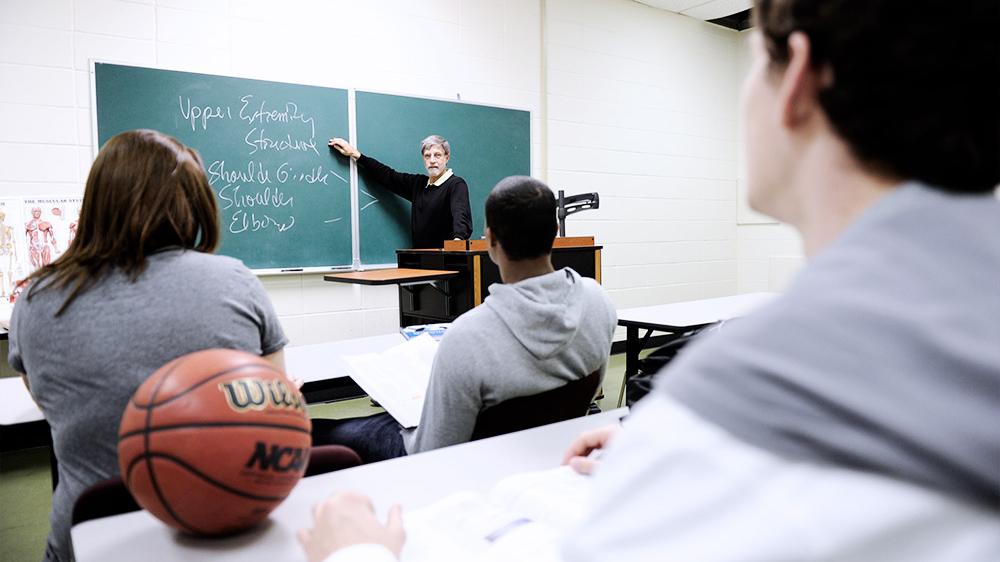I can’t tell you how many times I’ve heard a heart breaking story about a student athlete that just missed his or her academic requirements to play in college. Some of these
What are core courses?
Not all high school classes count as NCAA core courses. Only classes in English, math (Algebra 1 or higher), natural or physical science, social science, foreign language, comparative religion or philosophy may be approved as NCAA core courses. Remedial classes and classes completed through credit-by-exam are not considered NCAA core courses.
Classes that are NCAA core courses include:

- English: English 1-4, American Literature, creative writing
- Math: Algebra 1-3, Geometry, statistics
- Natural of physical science: biology, chemistry, physics
- Social science: American History, civics, government
- Additional: comparative religion, Spanish 1-4
Classes that are not NCAA core courses include:
- Classes in non-core areas, fine arts or vocations such as driver education, typing, art, music, physical education or welding.
- Personal skill classes such as personal finance or consumer education.
- Classes taught below grade level, at a slower pace or with less rigor or depth. These classes are often titled basic, essential, fundamental or foundational.
- Classes that are not academic in nature such as film appreciation, video editing or greenhouse management.
If you take a high school class such as Algebra 1 or Spanish 1 before you start ninth grade, the class may count for your 16 core courses if it is on your high school’s list of approved core courses and is shown on your high school transcript with a grade and a credit.
Credit
You can earn credit for a core course only once. If you take a course that repeats the content of another core course, you earn credit for only one of these courses and the higher grade counts toward your core-course GPA.
Generally, you receive the same number of credits from the NCAA for a core course that you receive from your high school for the class. One academic semester of a class counts for .5 of a core course credit. One academic trimester of a class counts for .34 of a core-course credit. One academic quarter of a class counts for .25 of a core-course credit. A one-year class taken over a longer period of time is considered one core course and is not awarded more than one credit.
Calculate your core-course credits and GPA
Division I additional core course
Division I schools allow you to complete one additional core-course unit after you graduate high school, as long as you graduate in eight semesters after you begin ninth grade. The additional core-course unit must be completed within one year after your high school graduation and must be completed before you enroll in college.
The additional core course unit may be taken at a different school than the high school from which you graduated as long as the class is on the new school’s list of approved NCAA core courses. If you take the additional core course at a school other than the school from which you graduated, you must provide the NCAA Eligibility Center with an official transcript from the new school showing the additional core-course grade and credit.
If you take the additional core course through a program that does not award credit, the course must be awarded credit by a credit-awarding high school.
Source: http://www.ncaa.org/student-athletes/future/core-courses
Image Source: NCAA
